Barley Plant: Grain For Brewing Or Bread
The barley plant is a long-sown tradition amongst grain-growers. We explore this useful edible crop and how to grow it yourself!
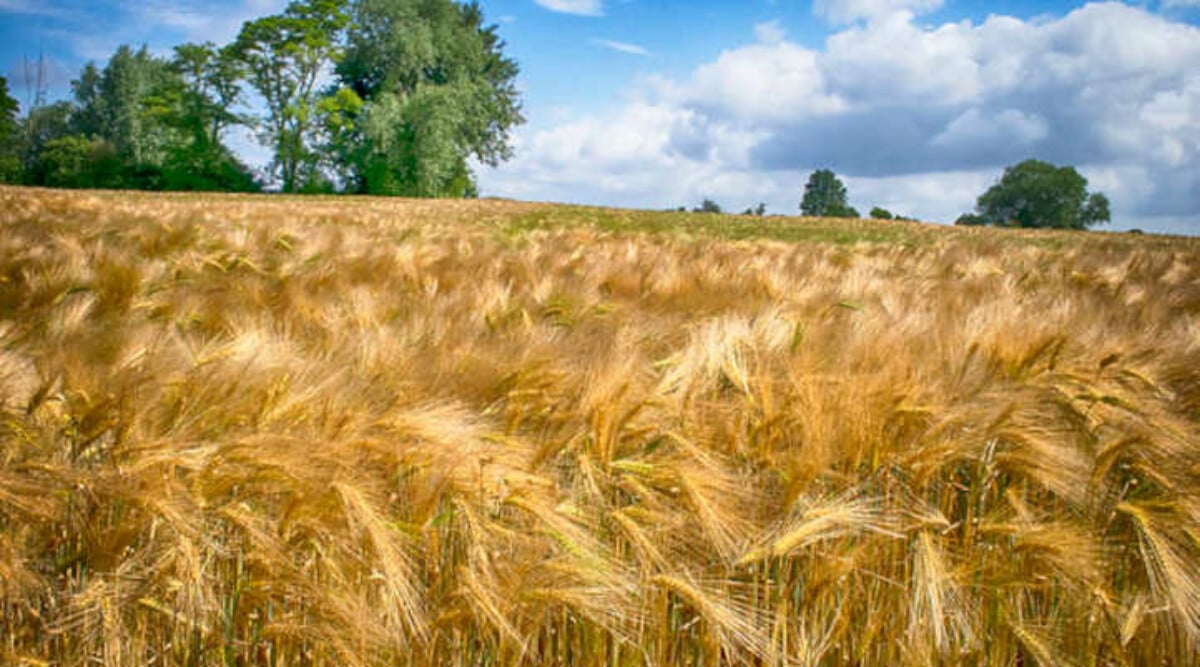
Contents
The barley plant is one that doesn’t receive a lot of attention, but it’s worth the time to learn about this spring annual. It may not be as popular as other small grains such as wheat, rice, rye, oats, or corn, but nevertheless, it is still important.
Known as the other cereal grain, it has been cultivated for thousands of years and is grown in areas that would otherwise not support food crops. It is also an important source of animal feed and many beer brewers are growing their own malting barley in search of the perfect ale.
Each head of barley (Hordeum vulgare) produces up to 20 to 60 grains, making even a small barley field productive for the home gardener. Barley contains 8 essential amino acids and a host of other vitamins and minerals. Besides, a beef stew wouldn’t be as tasty or filling without barley added to the mix.
As you continue to read this article, we will describe more about this fascinating grain and once you realize how easy it is to grow, it will surely inspire you to grow it in your own food garden.
Good Products At Amazon For Growing Barley:
Quick Care Guide

| Common Name(s) | Barley |
| Scientific Name | Hordeum vulgare |
| Days to Harvest | 70-90 days |
| Light | Full sun |
| Water | Keep the soil lightly moist |
| Soil | Well-drained, loamy soil |
| Fertilizer | A small amount of nitrogen in poor soil |
| Pests | Cutworms |
| Diseases | Leaf rust |
All About Barley
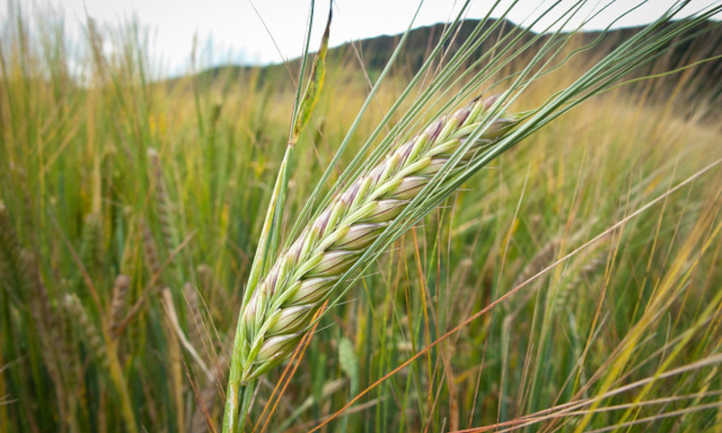
Barley is a member of the grass family with the botanical name of Hordeum vulgare. It is a spring annual and an ancestor of wild barley, Hordeum spontaneum. Barley production is an important crop throughout the world and one of the oldest. There is evidence it was domesticated at least 10,000 years ago in Southwest Asia.
Barley grows as an erect grass with 1-6 stems and spikelets at each head. There are independent lateral branches called tillers on each plant. Each tiller has the potential to mature into a seed-bearing head, thus the more tillers the plant produces, the more yield the crop will bring.
Providing plenty of nitrogen for the growing barley will help increase the number of tillers produced. As the barley plant matures, it turns from bright green to light brown and the spikelets produce the edible grain. Each flowering head contains both male and female parts, which enables it to self-pollinate.
Compared to other grains like wheat and rye, barley plants tolerate a variety of climates and thrive in many conditions. Thus, it is an important food crop in areas where other grains won’t grow. It is most known for its use as animal feed and malting barley produces beer and whiskey.
Fall planted barley can be grown as a cover crop to prevent erosion, deter weeds, and provide valuable nutrients to the soil and many grow it as sweet tender greens, also known as barley grass, that can be eaten by humans, dogs, and cats for an added nutritional boost. Once the seeds are removed, the dried stalks are used as straw for algae control in ponds and lakes.
Types of Barley
There are hundreds of varieties of barley seed on the market today. You will often hear the term two-row and six-row barley. When you view a barley head from the top down, the two-row barley has two rows of kernels while the six-row barleys have six rows of kernels – it is referring to the arrangement of the seeds along the stalk.
Two-row barley is preferred for beer-making since it produces a fuller flavor and higher yields due to the lower enzyme and proteins and higher starch content. Six-row barley is higher in protein and carbohydrates making it a good food product.
Two popular cultivars are the six-row Robust Barley because it is high-yielding with plump kernels and is resistant to stem blotch and stem rust. Pinnacle is a two-row variety that matures a little later but has high yields, large kernels, and strong stems.
Planting Barley
Barley prefers cooler weather and thrives when planted in the spring or winter. You don’t need many acres to grow this nutritious grain. For example, 200 square feet might provide up to 40 pounds of barley once harvested.
Plant barley (Hordeum vulgare), in well-draining soil either in-ground, raised beds, or within large containers. However, you may not get a big harvest when using containers alone. With tight planting, it is possible to get up to 25 plants per square foot. The recommended seeding rate is 95 to 120 pounds per acre.
Barley needs full sun and regular moisture, though it won’t grow well if the ground is soggy. Plant seeds when the dirt is workable in the spring and keep the soil moist until germination. Barley will thrive best in cooler environments, and you can choose varieties that perform better for the time of year you plan to plant.
Care
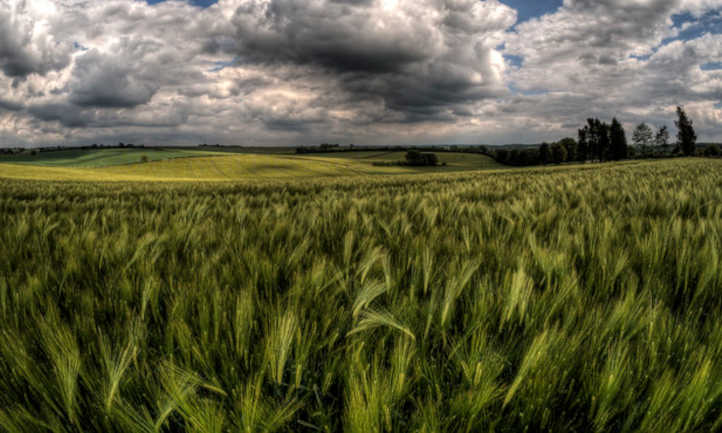
Caring for your own barley is an easy process. This section covers the requirements to grow this grain and how to get the best results.
Sun and Temperature
Barley requires full sun to grow adequately, which is at least 6 hours per day. The USDA growing zone is 3-8, but you can find a variety that grows well in your climate and the time of year you will plant it.
The ideal temperature for growing barley is 55F, but that too depends on the variety you decide to cultivate. However, it is a cool-season crop and you will have better yields in warmer areas if you plant it in the early spring or fall.
Spring planted barley needs to be harvested before the first frost to prevent damage to the seed heads. In northern climates, winter barley is well adapted to survive the cold, though not as hardy as winter wheat and rye. In zone 8 or warmer, barley will grow well when planted between September and February before temperatures rise above 85F.
Water and Humidity
Keep the seeds moist until they have germinated and then water to keep the ground slightly moist. How much water you need will depend on the air temperature and humidity. Warmer temperatures will require frequent irrigation. When temperatures drop, the need for water will decline too, barley does not like to be sopping wet.
Barley plants can be watered with any type of irrigation. Most farmers find sprinklers to be the easiest with larger crops, though this increases the likelihood of fungal diseases.
Soil
The ideal soil for barley grains is well-drained and loamy, with a pH range of 6.0 to 6.5. Of all the cereal grains, it is the most tolerant of alkaline soils, making it salt-tolerant, drought-tolerant, and a good choice to place in overworked, weedy, and eroded fields because it improves soil tilth.
Fertilizing
Barley does not require a high amount of fertilization. In fact, if you give it too much fertilizer, it will cause the plant to produce more vegetation and fewer seeds. It’s a good idea to test your garden dirt before applying fertilizer, especially since this plant doesn’t need a lot of extra nutrients.
Barley needs only a small amount of potassium and phosphorus- even less than nitrogen. If your soil is lacking, then you can fertilize at the beginning of the season. However, if you have a rich garden base, then it will be adequate for growing this crop.
Pruning/Training
Barley does not require pruning, but you can mow the crop to postpone flowering. Once you remove the seed head it will take time to produce another one, since it will eventually grow another. If you are growing it as a cover crop to incorporate nutrients into the dirt, you will also want to mow or till it before the flowers develop to prevent the seeds from germinating and growing in the soil at a later time.
Propagation
The only way to grow barley is from seed. In northern climates, sow the seeds in the spring for a fall harvest. Otherwise, in warmer climates, spring barley is ready from the fall-planted barley. The planting section mentions more about barley cultivation and you can find widely adapted seeds for your region.
Barley seed can be broadcasted, but make sure approximately 1 inch of soil covers the seed or the birds will eat them before they’ve had a chance to germinate. Barley seed germinates rapidly, usually within 3 to 5 days.
Harvesting and Storing
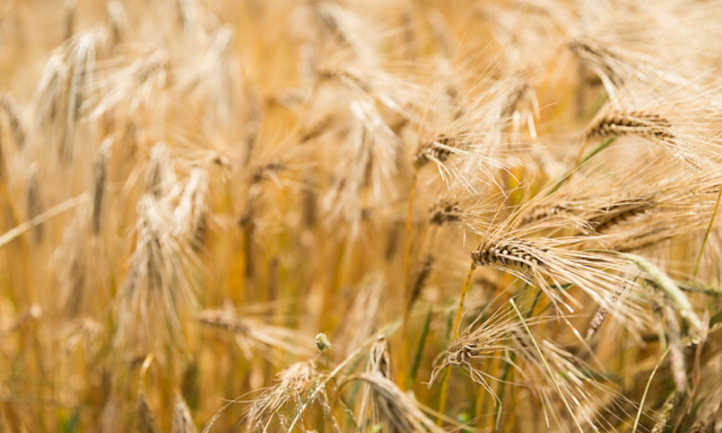
Once the seed heads have dried, it’s now time to harvest. This process can be time-consuming for the home gardener, but it can also be a lot of fun and it’s not a difficult process.
Harvesting
When the grain comes off easily from the head, it is ready to harvest. If you plant a hull-less barley variety, the hull falls off easily. Use a hand trimmer or sickle to cut the stalks from the base of the plant. Bundle the barley into sheaths, with the heads at the top, and place them in the sun to dry for 7-10 days. Once adequately dried, cut the seed head from each stem and place them in a pillowcase. Use a soft mallet to beat the heads to release the barley kernels. This is also known as threshing.
Storing
Once the small grain separates from the chaff, place the grains in an airtight container and store in a cool, dry spot for up to 6-8 months. Another option is to place them in freezer bags and store in the freezer; they will keep at least one year or longer.
Troubleshooting
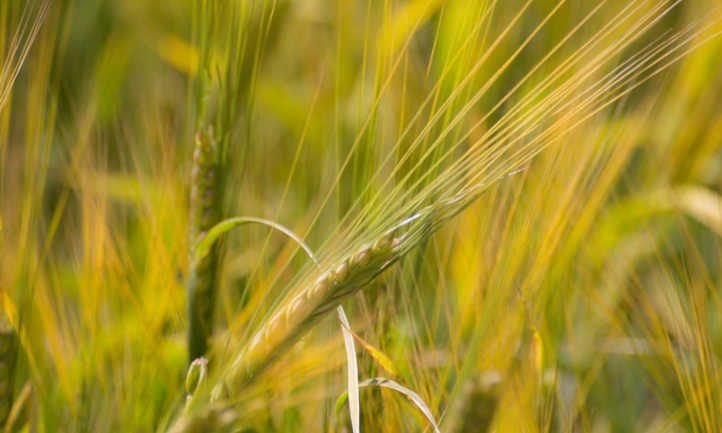
As with any grain, there can be growing concerns and possible pests and diseases prone to affect barley. Fortunately, modern agriculture produces many resistant varieties.
Growing Problems
Barley (Hordeum vulgare) is not a difficult crop to grow, but care needs to be taken not to overwater, since this can stimulate fungal root rots that will cause the roots to decompose and provide mixed results with the growth of the plant. Also, rainfall or anything that causes the heads to become wet (such as sprinklers) when it is almost time to harvest can cause the seeds to sprout. Watch the weather forecast at harvest time and remember there’s no need to irrigate then.
Pests
Compared to other cereal grains, barley produces alkaloids that deter many common grain pests, such as armyworm larvae and aphids. Most of the pest problems occur within large-scale storage, but a common pest seen during the growing season are cutworms.
Cutworms are night-flying moth larvae that eat the stems of young plants. They range in color from tan to grey and have spots or stripes along their backs. Most will be less than 2 inches long and will curl into a ball when touched. They sleep in the soil during the day and feed at night. The best method to get rid of cutworms is to pick them from the plant and drop them in soapy water.
Prevent cutworm infestation by removing plant debris and weeds where the eggs are laid. A natural pesticide option is Bacillus thuringiensis (Bt), a common bacteria that kills cutworms.
Diseases
Leaf diseases such as leaf rust can affect vegetative growth on the barley plant. It is a fungal disease caused by Puccinia hordei that produces orange-brown circular spots on upper leaf surfaces. Infection begins later in the season and usually when there is high humidity and wet summers.
There are cultivars that are resistant to this disease, but if your barley is affected, an organic foliar fungicide can be applied at the first sign of infection. Remove plants if the disease progresses to prevent further spread to the rest of your crop. You can also prevent rust by providing plenty of space and airflow between each plant.
Frequently Asked Questions
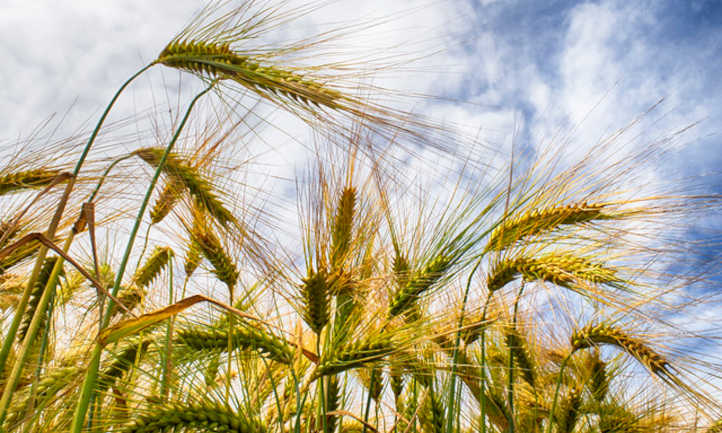
Q: What is barley plant used for?
A: Cultivated barley is ground into flour, used as a cereal grain, or it is a nice addition to soups and stews. Many alcoholic beverages are made from malting barley, and sprouted barley is considered to be a superfood.
Q: Can I grow barley at home?
A: Yes, barely is a great option for home gardeners because a 200 square foot area can yield up to 40 pounds of barley. Raised beds and large containers are also options for growing barley at home.
Q: How long does barley take to grow?
A: Barley needs approximately 50-90 days to mature, depending on the variety and the time of year it is planted. Spring barley is harvested sooner than fall planted.
Q: What is the difference between wheat and barley?
A: Even though they both belong to the grass family, wheat is from the genus Triticum and barley Hordeum. Barley is easier to cook and eat in its more natural form as a whole grain or in pearl form. Wheat has to be milled, ground, or broken, and the outer bran layer of the wheat is removed before it is consumed.






